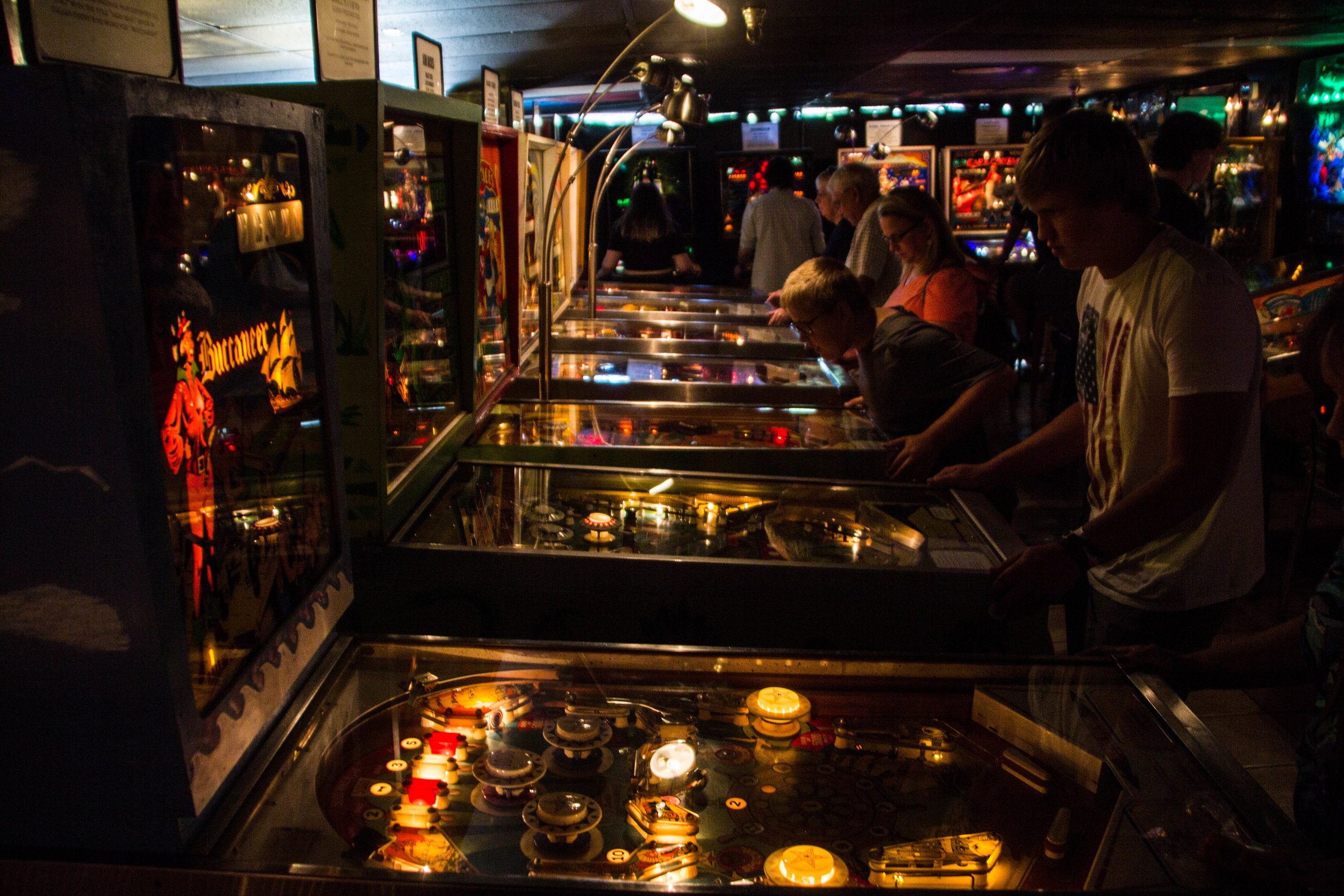In the last article, we talked through a lot of the context surrounding the city of Asheville, North Carolina, as well as a few notable areas in and around the city. Today we’re going to get a bit more specific and highlight a few of my favorite Asheville establishments and landmarks.
1. Vortex Doughnuts
Hence forth, let it be known that I will begin every visit to Asheville with a trip to Vortex Doughnuts. This place rules.
Situated on a rapidly developing corner of the city, just a stone’s throw from Downtown, Vortex Doughnuts is a bakery of Doughnuts and full-service coffeeshop. They bake their doughnuts fresh every single day, and they are uh-MAZE-zing. I’d tell you I’ve had better doughnuts before… but I really can’t remember when. These are some high-quality pastries and are sweet without crossing over into being overwhelming, as supposedly great doughnuts often do. Vortex is right in the sweet spot (pun intended).
Vortex opened in 2014, which seems like not a very long time ago when you consider what a massive reputation this place earned for itself. I’d say it’s on the same level as Voodoo Doughnuts in Portland, Oregon or Mike’s Pastries in Boston, Massachusetts. However, unlike these examples, I’ve yet to hear from anybody who says that Vortex does not live up to the hype. So let me put a call out to all you haters out there: if anybody thinks Vortex sucks, let me know! Comment on this article. I bet I won’t hear from anybody.
2. Grove Arcade
If you read my last article on Asheville, then you know that this is Appalachia’s capital for Art Deco architecture and design. You see, prior to the Great Depression, Asheville was something of a boom town. There was a lot going on here. But after the Depression was over, while many American cities were investing heavily in construction projects, modifying and expanding their skylines, Asheville took a more conservative approach. City officials here were committed to paying down the considerable debt that Asheville had accumulated before following suit and going into a construction boom. By the time their debt was paid off, this city had made it into the modern era looking like something out of The Great Gatsby. It wasn’t long before this was a quality that people sought to preserve, which leads us to the Grove Arcade. Located in the heart of Downtown Asheville, the Grove Arcade is basically a small mall. However, it’s also a time capsule.
The Grove Arcade began as the vision of one E.W. Grove, a self-made millionaire who relocated to Asheville in 1910. By the time the roaring 20s rolled around, he had already started a few local businesses, all housed in buildings that he had also built. However, this was his passion project. Though he died in 1927, 2 years prior to the completion of this structure, before he kicked the bucket he was quoted as saying. “It is generally conceded that the Arcade Building would do justice to a city many times the size of Asheville. It is by far the finest structure in the South and there are few, if any, finer in the entire country.” This might have been true if the original plans of making this into a 14 story building had come to fruition… but fate had other plans. As America entered the Great Depression, the Grove Arcade served as a pillar of commerce in the community… even though it was still 12 stories short of completion. And today, it still stands in the same place. It’s substantial, but it’s only 2 stories high.
At the start of WWII, the US Government took control of the building, evicting all 74 shops and 127 offices on a month’s notice. These sorts of big modern structures in remote regions of the country were very useful during a war effort, but when the war ended, the government retained control of the building, converting it into HQ for the National Climatic Data Center.
Finally, in the 1980s, public pressure began to return the building to its original use. Over the next decades, the building was remodeled / restored / placed on the National Register of Historic Places, and eventually re-acquired by the city of Asheville under the National Monument Act on a 198-year lease. And finally, it opened for business in 2002 as the marketplace it was always intended to be. If you’re ever in Asheville, check this place out. It’s pretty dang cool.
3. Battery Park Book Exchange
Now that you know all about the Grove Arcade, I want to highlight my favorite (and probably everybody’s favorite) occupant. The Battery Park Book Exchange is the book store to end all book stores. It’s not quite on the level of Powell’s in Portland Oregon, but what it lacks in size it makes up for coziness and charm. If you are a book worm or just somebody who likes to explore old book stores (you know who you are), you’re going to be in heaven here. Oh, and did I mention that this place is dog friendly? Dog parents, take note.
At first glance, the Battery Park Book Exchange looks like something out of one of the books on its own shelves—like some old, Trans-Atlantic library-book store-café hybrid. The walls are decorated with the sorts of antique relics that would inspire one to crack open thick books that would have been intimidating under other circumstances. This place has a café, champagne bar, and small restaurant inside where you can order a latte and post up with a book for the afternoon. This place has two stories, but as soon as you begin climbing the stairs up towards the second story, you will quickly find yourself boxed into tiny hallways under low-hanging ceilings. Up here, packed, creaky bookshelves create a small labyrinth just waiting to be explored.
Basilica of St. Lawrence
The Minor Basilica of St. Lawrence the Deacon & Martyr (or just “Basilica of St. Lawrence for short) is a striking brick church that sits just a stone’s throw from the center of downtown Asheville. Designed and brought to life in 1905 by architects R. S. Smith, and Rafael Guastavino (with input from Asheville’s Roman Catholic community at large), this church actually draws much of its architectural influence from the Catalan tradition. Guastavino, if you couldn’t guess from his name, was Spanish and this heritage played heavily into the way he design the Basilica of St. Lawrence.
This might seem like sort of a random church, but it actually holds an interesting superlative. Apparently its dome, which is 58x82 feet (18x25 m), and is reputed to be the largest, freestanding, elliptical dome in all of North America. It kind of blows my mind that this is the biggest anything in North America, because it’s really not a huge building, but the internet said it, so it must be true. You will see this dome arching over the main seating area in the photos below. This facet of the church is actually quite distinct, but I was not aware of it’s status until research conducted after my visit.
There’s a lot of history behind this place, but it’s also an actively functioning church. You can come here for service if you find yourself here on a Sunday! The stained glass window in this church were apparently made in Munich, Germany, and imported to the U.S. On either side of the main seating area there are two small chapels, the "Chapel of Our Lady" (left side) and the "Eucharistic Adoration Chapel" (right side). These also make for some cool exploring. It wasn’t the easiest space to photograph, but I think I did an okay job.
Pinball Museum
This last one of sort of took me by surprise. The idea of a pinball museum may not sound particularly enthralling to everybody… but hear me out. If there is even a HINT of nerd culture inside of you, or appreciation thereof, you are going to have a field day in here. Especially if you are old enough to remember going to the arcade. Do kids still do that? Since they all seem to have their own iPads these days, I’m guessing no. ¯\_(ツ)_/¯
Just across the street from the Grove Arcade, the Pinball Museum occupies a pretty inglorious space. It’s tucked away behind the opaque windows of what feels almost like a basement space. I’ll admit I was a bit skeptical walking in, but that quickly melted away in the glow of decades’ worth of pinball machines. We were still on the fence about paying for entry, but then the woman working the front desk informed us that if we did not play any of the games, we wouldn’t have to pay. So with a shrug we began a slow walk around the space. Many of these pinball machines had people playing them. There was a series of awesome Lord of the Rings themed machines that I couldn’t get close enough to take a good picture of, but below you will find lots of other pictures that are sure to bring out the nerd in you. I would highly recommend a visit to this place if you have the time.
If you’ve got an afternoon to kill in Asheville all of the above should keep you decently busy. It’s a fun day’s itinerary.
If you haven’t noticed over the course of these last articles, the late 1800s to the 1920s was a VERY lucrative and defining time in the history of this city. If there was a “Great Gatsby: Appalachia Edition,” it would be set here. Even today, the city is defined by Art Deco architecture and historical landmarks from this time period. However there is one element of this that is absolutely defining to Asheville that we have not yet covered.
I’m talking about the Biltmore Estate. Once the largest private residence in the U.S., and the home of the legendary Vanderbilt family, this is a mansion unlike any other you are likely to see in America, and especially in the Appalachia region. This is a HUGE puzzle piece in the historical landscape of Asheville, and the setting of our next article. Stay tuned!
























































